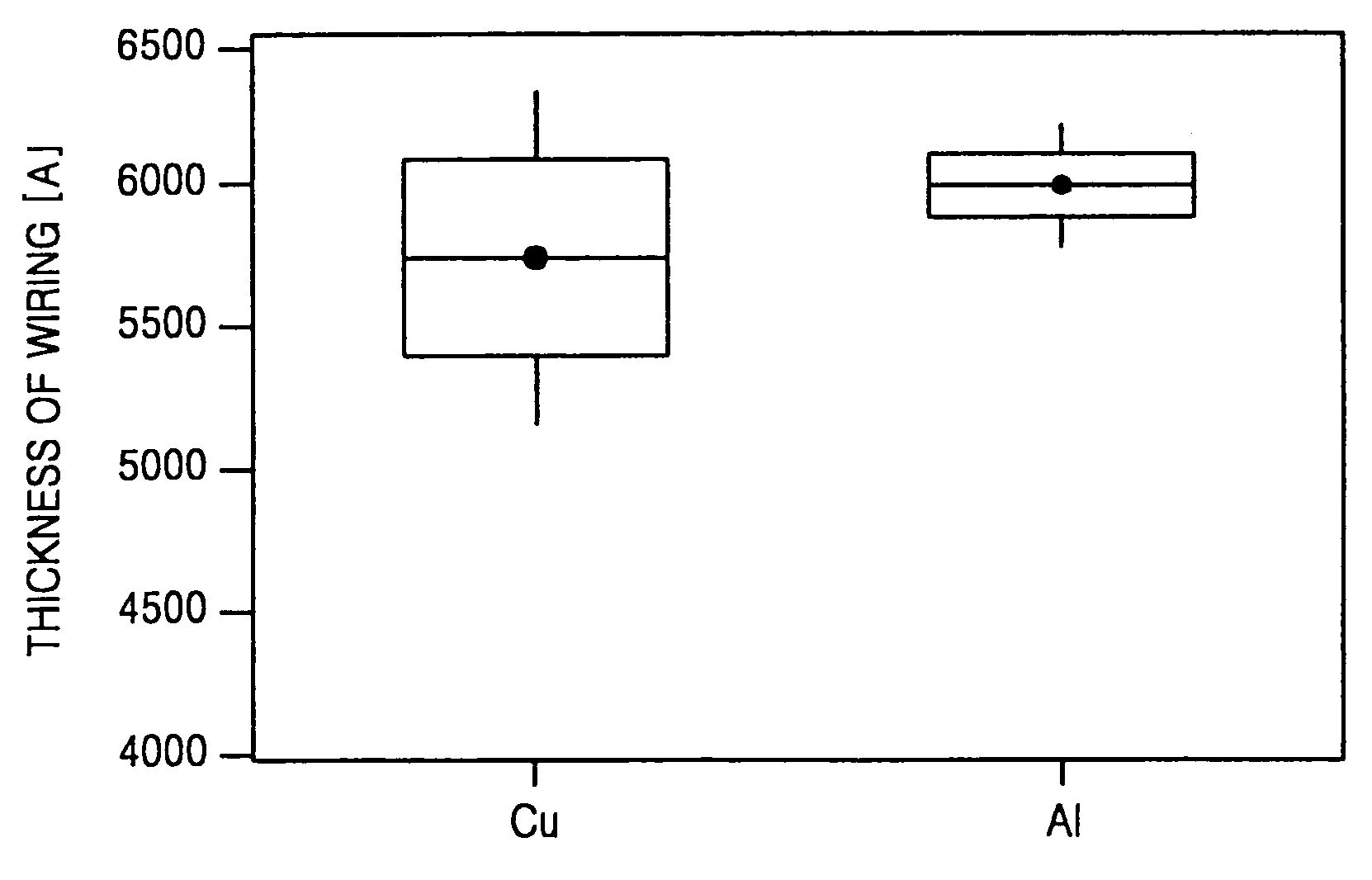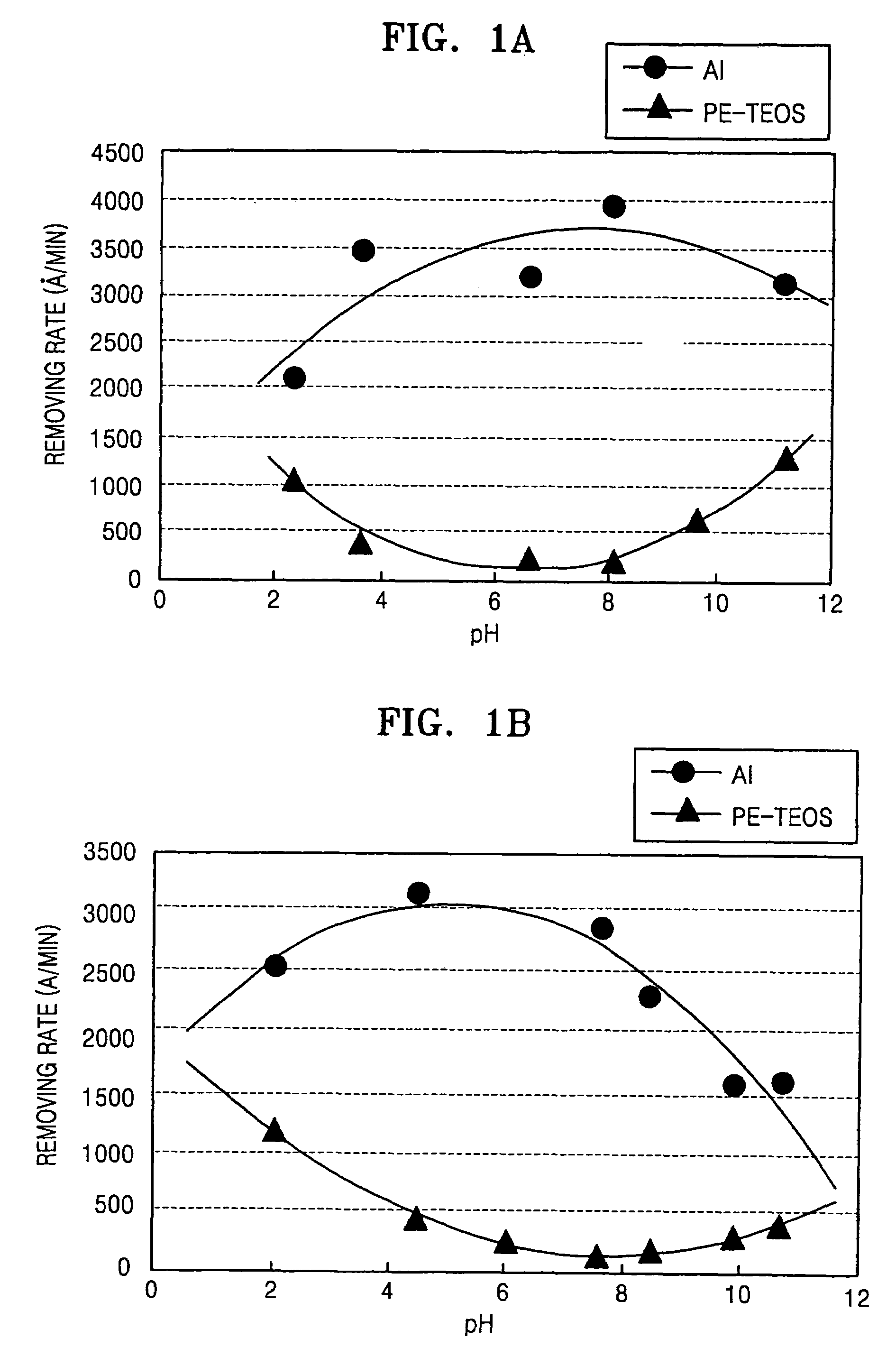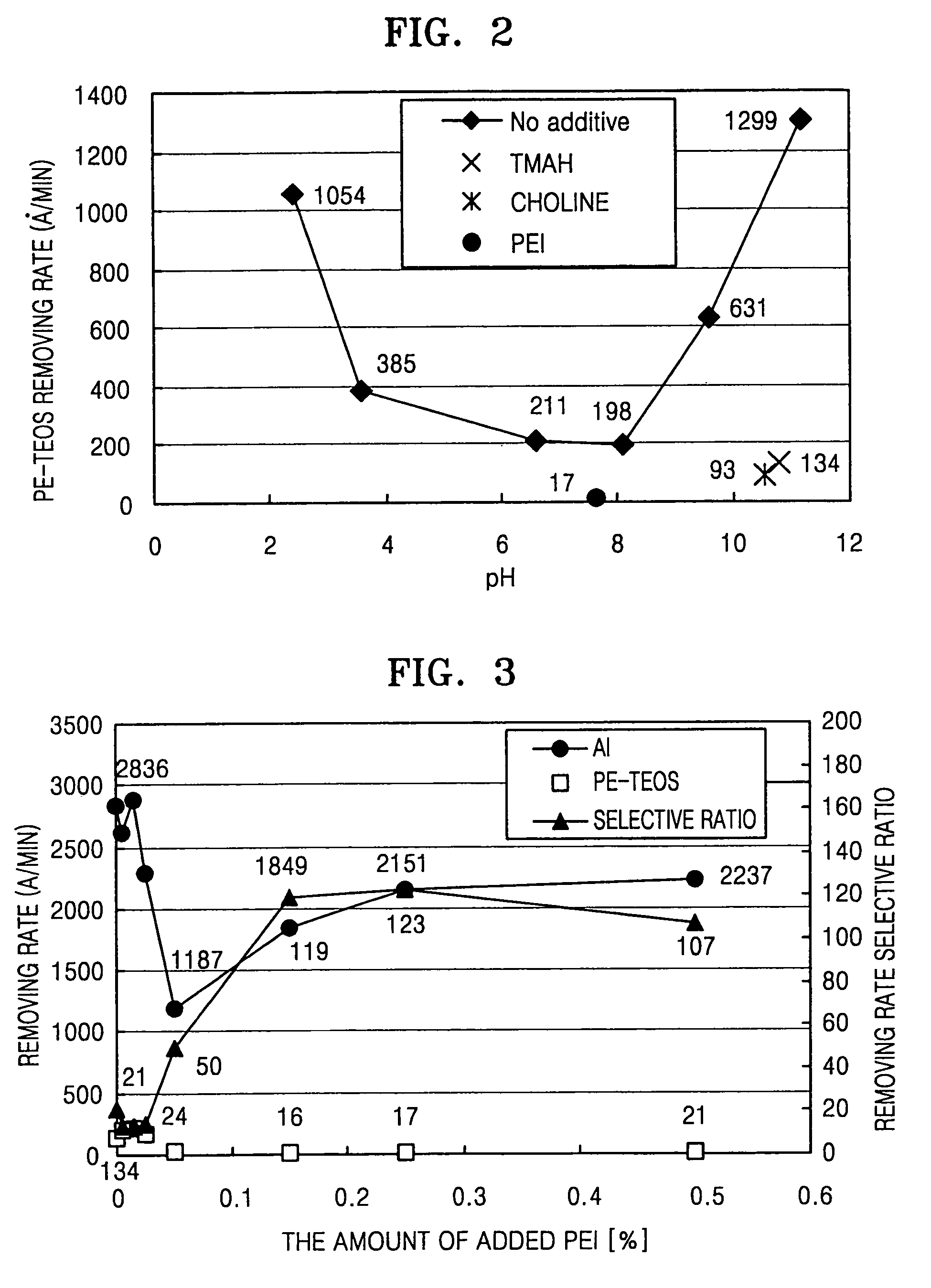CMP slurry for forming aluminum film, CMP method using the slurry, and method for forming aluminum wiring using the CMP method
a technology of aluminum wiring and slurry, which is applied in the direction of surface treatment compositions, abrasives, chemistry apparatus and processes, etc., can solve the problems of voids forming in aluminum patterns, damascene methods can substantially influence the electrical characteristics of aluminum wiring, and the technique is not well suited to highly integrated devices with extremely small pattern widths and extremely small gaps. , to achieve the effect of reducing the removal rate of silicon oxide film
- Summary
- Abstract
- Description
- Claims
- Application Information
AI Technical Summary
Benefits of technology
Problems solved by technology
Method used
Image
Examples
first embodiment
CMP Slurry of a First Embodiment
[0034]A slurry for CMP of an aluminum film according to a first embodiment of the present invention is a compound containing a polishing agent, an oxidant, a pH control additive, and an oxide film removal retarder which reduces a removal rate of a silicon oxide film.
[0035]Colloidal silica (SiO2) is a preferred polishing agent for the slurry of the first embodiment. Other exemplary compounds that can be alternatively or additionally used as a polishing agent are alumina (Al2O3), ceria (CeO2), mangania (MnO2), or zirconia (ZrO2), or a composite of two or more of these materials. The polishing agent should cause minimum scratching on the surface of the aluminum film during a CMP process, and accordingly, the polishing agent should preferably have a small and uniform particle size distribution. Colloidal silica meets this characteristic requirement. A desirable ratio of the polishing agent in the first slurry to a total weight of the first slurry is 2˜20 ...
first experiment
[0039]CMP equipment designated as F-REX 200 and manufactured by Ebara Co. was used for the experiments described herein. The polishing pads used were an IC 1000 pad for the top polishing pad and a SUBA 4 pad for the sub polishing pad. All experimental data were obtained under the following operating conditions: (1) contact pressure (polishing load) of the wafer to the polishing pad was 250 hPa, and (2) rotational speed of the polishing plate, to which the polishing pad was attached, was 80 rpm.
[0040]In order to observe the effect of the oxidants in the CMP process, a removal rate of an aluminum film, a removal rate of a PE-TEOS film (inter metal dielectric (IMD) layer), and a reflective index (RI) after a CMP process were measured with respect to different oxidants contained in respective CMP slurries. Each slurry contained 10 wt % colloidal silica, and oxidant concentration of each was 0.1 M. The results of the first experiment are summarized in Table 1. Referring to Table 1, in vi...
second experiment
[0042]In order to observe the effect of the pH of the slurry in the CMP process, the removal rate of the aluminum film and the removal rate of the PE-TEOS film were measured while varying the pH of the slurry. Nitric acid and potassium hydroxide were used for the titrant, i.e., as additives for adjusting the pH. In the second experiment, a slurry having 10 wt % colloidal silica and 10 wt % hydrogen peroxide was prepared. Afterward, measurements were carried out using slurries in which the pH was controlled by adding the titrant. The results are summarized in Table 2 and depicted in FIG. 1A. Referring to Table 2 and FIG. 1A, the removal rate of the aluminum film and the silicon oxide film varied according to the pH of the slurry. In particular, when the pH of the first slurry is in a range of 4˜9, the removal rate selectivity of the aluminum film to the silicon oxide film is the greatest.
[0043]
TABLE 2RemovalRemovalRemoval raterate ofrate ofselectivitypH ofaluminum filmPE-TEOS film(Al...
PUM
| Property | Measurement | Unit |
|---|---|---|
| contact pressure | aaaaa | aaaaa |
| pH | aaaaa | aaaaa |
| leakage current | aaaaa | aaaaa |
Abstract
Description
Claims
Application Information
 Login to View More
Login to View More - R&D
- Intellectual Property
- Life Sciences
- Materials
- Tech Scout
- Unparalleled Data Quality
- Higher Quality Content
- 60% Fewer Hallucinations
Browse by: Latest US Patents, China's latest patents, Technical Efficacy Thesaurus, Application Domain, Technology Topic, Popular Technical Reports.
© 2025 PatSnap. All rights reserved.Legal|Privacy policy|Modern Slavery Act Transparency Statement|Sitemap|About US| Contact US: help@patsnap.com



